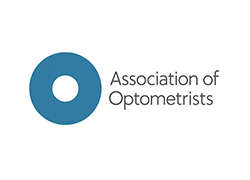The eye is one of the most intricate organs in your body; its inner workings are complex yet fascinating. Below is a handy guide to its main structures and their function.

A: Ciliary Muscle
Creates focus by adjusting the shape of the lens.
B: Conjunctiva
A clear membrane covering the front of the eye and inner eyelids. It helps keep the eyes moist and is the first line of defense against infection.
C: Cornea
Is the clear front part of the eye covering the iris and pupil. It is the first and most powerful lens in the eye’s optical system. It needs to be protected from accidents and infections.
D: Crystalline Lens
Lies just behind the pupil. It keeps the world in focus on your retina. Over time it loses elasticity, which is why we all eventually need reading glasses. A cataract is the clouding of this lens.
E: Eyeball
Measures approximately 1 inch in diameter. Larger eyes may be nearsighted (myopic) and smaller ones farsighted (hyperopic).
F: Eyelid
Helps to protect and lubricate our eyes.
G: Iris
Is the coloured part of the eye. This ring of muscle fibers contracts and expands to open and close the pupil as the surrounding light level changes.
H: Optic Nerve
Connects the eye and brain with roughly 1.2 million nerve fibres.
I: Orbital Muscles
Six muscles which control all eye movements.
J: Pupil
The pupil is the hole in the center of the iris through which light passes. The iris controls its size and therefore the amount of light entering the eye.
K: Retina
Converts light into electrical signals and sends them to the brain through the optic nerve which allows us to see.








